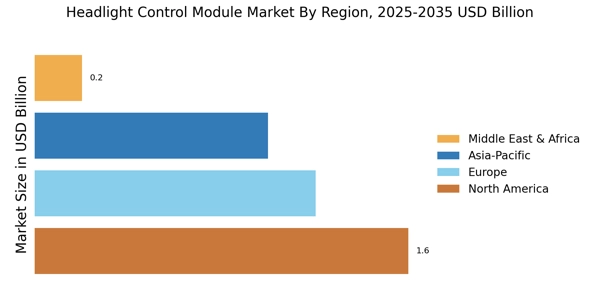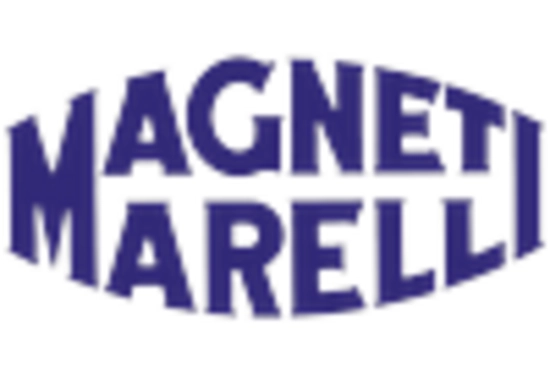Regulatory Standards and Compliance
The Headlight Control Module Market is significantly shaped by stringent regulatory standards and compliance requirements. Governments worldwide are implementing regulations that mandate the use of advanced lighting technologies to improve road safety. These regulations often require vehicles to be equipped with headlight control modules that can adapt to varying conditions, such as weather and traffic. Compliance with these standards is not only essential for manufacturers but also drives innovation within the industry. As a result, the Headlight Control Module Market is expected to see increased investment in research and development to meet these regulatory demands. This focus on compliance is likely to enhance the overall quality and performance of headlight control modules in the automotive sector.
Consumer Preference for Customization
The Headlight Control Module Market is also influenced by consumer preferences for customization in automotive lighting. As consumers seek personalized vehicle features, manufacturers are responding by offering customizable headlight systems that can be controlled through mobile applications. This trend towards personalization is driving the demand for advanced headlight control modules that can accommodate various settings and preferences. Market data suggests that vehicles with customizable lighting options are more appealing to younger consumers, who prioritize technology and personalization in their purchasing decisions. Consequently, the Headlight Control Module Market is likely to expand as automakers innovate to meet these consumer demands, integrating more sophisticated control modules into their lighting systems.
Increase in Electric Vehicle Production
The Headlight Control Module Market is poised for growth due to the increase in electric vehicle production. As manufacturers shift towards electric vehicles, the demand for efficient and innovative lighting solutions rises. Electric vehicles often feature advanced headlight systems that require sophisticated control modules to manage energy consumption effectively. The integration of headlight control modules in electric vehicles not only enhances performance but also contributes to energy efficiency, a key selling point for environmentally conscious consumers. With projections indicating that electric vehicle sales could reach 30% of total vehicle sales by 2030, the Headlight Control Module Market is likely to benefit from this transition, as automakers invest in advanced lighting technologies.
Growing Demand for Vehicle Safety Features
The Headlight Control Module Market is significantly influenced by the growing demand for enhanced vehicle safety features. Consumers are increasingly prioritizing safety in their purchasing decisions, leading manufacturers to incorporate advanced headlight control systems. These systems not only improve visibility but also reduce the risk of accidents, aligning with global safety standards. According to recent data, vehicles equipped with advanced headlight control modules have shown a reduction in nighttime accidents by up to 30%. This trend is likely to continue, as regulatory bodies emphasize the importance of safety technologies in vehicles. Consequently, the Headlight Control Module Market is expected to expand as automakers strive to meet these evolving consumer expectations and regulatory requirements.
Technological Advancements in Automotive Lighting
The Headlight Control Module Market is experiencing a surge due to rapid technological advancements in automotive lighting systems. Innovations such as LED and laser technologies are enhancing visibility and safety, leading to increased adoption of advanced headlight control modules. These modules are designed to optimize light distribution, adapting to various driving conditions. As a result, the market is projected to grow at a compound annual growth rate of approximately 7% over the next five years. This growth is driven by consumer demand for enhanced safety features and the integration of smart technologies in vehicles. Furthermore, the increasing complexity of lighting systems necessitates sophisticated control modules, thereby propelling the Headlight Control Module Market forward.


















Leave a Comment